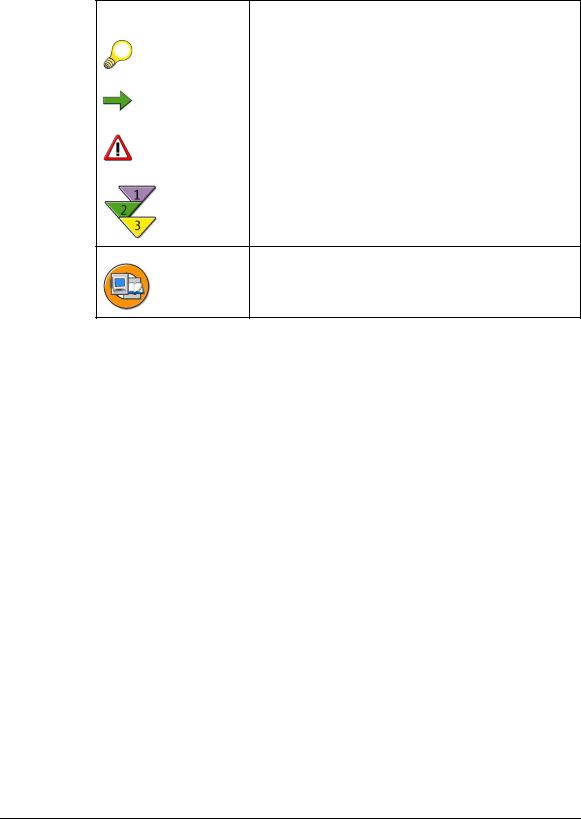
- •Icons in Body Text
- •Introduction to the Dictionary
- •Overview of the functions
- •Data objects in the ABAP Dictionary
- •Data types
- •Exercise 1: Basic Data Types
- •Exercise 2: Simple and Nested Structures
- •Exercise 4: Deep Structures
- •Tables
- •Summary
- •Exercise 5: Tables in the ABAP Dictionary
- •Pooled and cluster tables
- •Performance During Table Access
- •Improved Performance through Access per Index
- •Improving the Performance through Table Buffering
- •Exercise 6: Performance Aspects with Table Access
- •Task 1:
- •Input Checks
- •Input check via the technical domains
- •Object Dependencies
- •Activation and Where-Used List
- •Changes to Tables
- •Database Changes to Transparent Tables
- •Enhancement of SAP Standard Tables
- •Exercise 9: Changes to Database Tables
- •Views and Maintenance Views
- •Restricted or Enhanced Views on Database Tables
- •Exercise 11: Views
- •Creating Maintenance Views
- •Exercise 12: Maintenance Views
- •Search Helps
- •Input helps
- •Exercise 13: Search Helps
- •Table ZEMPLOY##
- •Table ZDEPMENT##
- •Table ZEMPLOY##
- •Table ZEMPLOY##
- •Table ZDEPMENT##
- •Table ZDEPMENT##
- •Check table T000
- •Check table SCARR
- •Check table ZDEPMENT##
- •Check table SCURX
- •Check table STRAVELAG
- •Check table ZDEPMENT##
- •Check table T002

BC430
ABAP Dictionary
mySAP Technology
Date
Training Center
Instructors
Education Website
Participant Handbook
Course Version: 2006/Q2
Course Duration: 3 Days
Material Number: 50084451
An SAP course - use it to learn, reference it for work
Copyright
Copyright © 2007 SAP AG. All rights reserved.
No part of this publication may be reproduced or transmitted in any form or for any purpose without the express permission of SAP AG. The information contained herein may be changed without prior notice.
Some software products marketed by SAP AG and its distributors contain proprietary software components of other software vendors.
Trademarks
•Microsoft®, WINDOWS®, NT®, EXCEL®, Word®, PowerPoint® and SQL Server® are registered trademarks of Microsoft Corporation.
•IBM®, DB2®, OS/2®, DB2/6000®, Parallel Sysplex®, MVS/ESA®, RS/6000®, AIX®, S/390®, AS/400®, OS/390®, and OS/400® are registered trademarks of IBM Corporation.
•ORACLE® is a registered trademark of ORACLE Corporation.
•INFORMIX®-OnLine for SAP and INFORMIX® Dynamic ServerTM are registered trademarks of Informix Software Incorporated.
•UNIX®, X/Open®, OSF/1®, and Motif® are registered trademarks of the Open Group.
•Citrix®, the Citrix logo, ICA®, Program Neighborhood®, MetaFrame®, WinFrame®, VideoFrame®, MultiWin® and other Citrix product names referenced herein are trademarks of Citrix Systems, Inc.
•HTML, DHTML, XML, XHTML are trademarks or registered trademarks of W3C®, World Wide Web Consortium, Massachusetts Institute of Technology.
•JAVA® is a registered trademark of Sun Microsystems, Inc.
•JAVASCRIPT® is a registered trademark of Sun Microsystems, Inc., used under license for technology invented and implemented by Netscape.
•SAP, SAP Logo, R/2, RIVA, R/3, SAP ArchiveLink, SAP Business Workflow, WebFlow, SAP EarlyWatch, BAPI, SAPPHIRE, Management Cockpit, mySAP.com Logo and mySAP.com are trademarks or registered trademarks of SAP AG in Germany and in several other countries all over the world. All other products mentioned are trademarks or registered trademarks of their respective companies.
Disclaimer
THESE MATERIALS ARE PROVIDED BY SAP ON AN "AS IS" BASIS, AND SAP EXPRESSLY DISCLAIMS ANY AND ALL WARRANTIES, EXPRESS OR APPLIED, INCLUDING WITHOUT LIMITATION WARRANTIES OF MERCHANTABILITY AND FITNESS FOR A PARTICULAR PURPOSE, WITH RESPECT TO THESE MATERIALS AND THE SERVICE, INFORMATION, TEXT, GRAPHICS, LINKS, OR ANY OTHER MATERIALS AND PRODUCTS CONTAINED HEREIN. IN NO EVENT SHALL SAP BE LIABLE FOR ANY DIRECT, INDIRECT, SPECIAL, INCIDENTAL, CONSEQUENTIAL, OR PUNITIVE DAMAGES OF ANY KIND WHATSOEVER, INCLUDING WITHOUT LIMITATION LOST REVENUES OR LOST PROFITS, WHICH MAY RESULT FROM THE USE OF THESE MATERIALS OR INCLUDED SOFTWARE COMPONENTS.
g200761043836

About This Handbook
This handbook is intended to complement the instructor-led presentation of this course, and serve as a source of reference. It is not suitable for self-study.
Typographic Conventions
American English is the standard used in this handbook. The following typographic conventions are also used.
Type Style |
Description |
|
|
Example text |
Words or characters that appear on the screen. These |
|
include field names, screen titles, pushbuttons as well |
|
as menu names, paths, and options. |
|
Also used for cross-references to other documentation |
|
both internal (in this documentation) and external (in |
|
other locations, such as SAPNet). |
Example text |
Emphasized words or phrases in body text, titles of |
|
graphics, and tables |
EXAMPLE TEXT |
Names of elements in the system. These include |
|
report names, program names, transaction codes, table |
|
names, and individual key words of a programming |
|
language, when surrounded by body text, for example |
|
SELECT and INCLUDE. |
Example text |
Screen output. This includes file and directory names |
|
and their paths, messages, names of variables and |
|
parameters, and passages of the source text of a |
|
program. |
Example text |
Exact user entry. These are words and characters that |
|
you enter in the system exactly as they appear in the |
|
documentation. |
<Example text> |
Variable user entry. Pointed brackets indicate that you |
|
replace these words and characters with appropriate |
|
entries. |
2006/Q2 |
© 2007 SAP AG. All rights reserved. |
iii |

About This Handbook |
BC430 |
Icons in Body Text
The following icons are used in this handbook.
Icon |
Meaning |
|
For more information, tips, or background |
|
|
|
Note or further explanation of previous point |
|
|
|
Exception or caution |
|
|
|
Procedures |
Indicates that the item is displayed in the instructor's presentation.
 iv
iv
© 2007 SAP AG. All rights reserved. |
2006/Q2 |

Contents
Course Overview ......................................................... |
vii |
Course Goals ........................................................... |
vii |
Course Objectives ..................................................... |
vii |
Unit 1: Introduction to the Dictionary ................................. |
1 |
Overview of the Functions of the ABAP Dictionary................. |
2 |
Unit 2: Data objects in the ABAP Dictionary ........................ |
9 |
Basic Data Types ..................................................... |
11 |
Tables in the ABAP Dictionary ...................................... |
46 |
Special SAP Tables................................................... |
68 |
Unit 3: Performance During Table Access ......................... |
75 |
Performance During Table Access................................. |
76 |
Unit 4: Input Checks ................................................... |
101 |
Consistency Through Input Checks ............................... |
102 |
Unit 5: Object Dependencies......................................... |
131 |
Object Dependencies ............................................... |
132 |
Unit 6: Changes to Tables ............................................ |
145 |
Changes to Tables ................................................... |
146 |
Unit 7: Views and Maintenance Views ............................. |
173 |
Views .................................................................. |
174 |
Maintenance Views .................................................. |
190 |
Unit 8: Search Helps ................................................... |
209 |
Search Helps ......................................................... |
210 |
2006/Q2 |
© 2007 SAP AG. All rights reserved. |
v |

Contents |
BC430 |
 vi
vi
© 2007 SAP AG. All rights reserved. |
2006/Q2 |

Course Overview
The course demonstrates the role of the ABAP Dictionary in the SAP system as well as its functional scope
Target Audience
This course is intended for the following audiences:
•ABAP developers and administrators who create global data objects, database tables, views, etc. in the Dictionary.
•Database designers who design a data model, which they want to transfer to the database.
Course Prerequisites
Required Knowledge
•BC400 or comparable basic knowledge of programming in ABAP
•SAPTEC or comparable knowledge on working with the SAPGUI
Recommended Knowledge
•Understanding the structure of a relational database
Course Goals
This course will prepare you to:
•Describe the function of the ABAP Dictionary in the R/3 system
•Define database objects and use them
•Create and adminster user-defined data types
•Use the services in the ABAP Dictionary
•Describe how the ABAP Dictionary is linked to the development and runtime environments
•Use the modeling language UML for data modeling
Course Objectives
After completing this course, you will be able to:
•Using and describing the ABAP Dictionary and its services
2006/Q2 |
© 2007 SAP AG. All rights reserved. |
vii |

Course Overview |
BC430 |
SAP Software Component Information
The information in this course pertains to the following SAP Software Components and releases:
 viii
viii
© 2007 SAP AG. All rights reserved. |
2006/Q2 |
